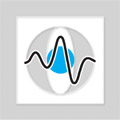Introduction to Pattern Recognition [IntroPR]
Dates & Rooms:
Tuesday, 10:15 - 11:45; Room: 0.68
Wednesday, 10:15 - 11:45; Room: 0.68
General Information
- Friday's exercises and Wednesday's exercises are again synchronized.
- Tentative course syllabus: It provides a roadmap to the lectures throughout the semester.
- The lecture videos from Winter Semester 2013 are available
 here. (They are only accessible from inside the university network; If you want to watch the videos from home, consider tunnelling the connection).
here. (They are only accessible from inside the university network; If you want to watch the videos from home, consider tunnelling the connection). - Prof. Niemann's textbook on Pattern Recognition Klassifikation von Mustern is available
 online.
online. A. Exam Dates
Monday 17.02.2014
Tuesday 18.02.2014
Thursday 20.02.2014
Wednesday 19.03.2014
Monday 31.03.2014
Tuesday 01.04.2014
B. Signing up for the Exam
Reserving a slot for the exam is only possible after January 6th, 2014.
You must reserve a time-slot for the exam, independent of whether you have signed up at meinCampus. You can do so:
either by personally visiting the secretaries at the Pattern Recognition Lab, at the 09.138 at Martenstr. 3, 91058 Erlangen,
or by sending them an email at Kristina Müller at mueller(at)cs.fau.de or at Iris Koppe at koppe(at)cs.fau.de .
Make sure in your email to write your full name, student ID, program of Studies, birthdate, number of credits and type of exam (e.g. benoteter Schein, unbenoteter Schein, Prüfung durch meinCampus, etc.).NEWS: The results of the IntroPR exam were added to myCampus. If you want to take a look at your corrected exam (Prüfungseinsicht), please contact
 Simone Gaffling. The deadline for Prüfungseinsicht is Nov 7th, after this date the grades are finalized.
Simone Gaffling. The deadline for Prüfungseinsicht is Nov 7th, after this date the grades are finalized.
Slides
The updated slides will be posted on the web soon after the corresponding lecture is completed.
In order to prepare yourself for an upcoming lecture, look at the ![]() slides of the previous Winter semester.
slides of the previous Winter semester.
| Introduction: | course outline, examples of PR systems |
| Key PR Concepts: | the pipeline of a PR system, terminology, postulates of PR |
| Sampling: | review of Fourier analysis, Nyquist sampling theorem |
| Quantization: | signal-to-noise ratio, pulse code modulation, vector quantization, k-means algorithm |
| Histogram Equalization and Thresholding: | histogram equalization, thresholding, binarization, maximum likelihood estimation, various thresholding algorithms (intersection of Gaussians, Otsu's algorithm, unimodal algorithm, entropy-based) |
| Noise Suppression: | Linear Shift Invariant transformations, convolution, mean filter, Gaussian filter, median filter |
| Edge Detection: | gradient-based edge detector, Laplacian of Gaussian, sharpening |
| Non-linear Filtering: | recursive filters, homomorphic filters, cepstrum, morphological operators, rank operators |
| Normalization: | size normalization, location normalization, pose normalization, geometric moments, central moments |
| Introduction to Feature Extraction: | curse of dimensionality, heuristic versus analytic feature extraction methods, projection on orthogonal bases, Fourier transform as a feature |
| Orthonormal Bases for Feature Extraction: | spectrogram, Walsh-Hadamard transform, Haar transform |
| LPC and Moments: | linear predictive coding, moments as features, Hu moments |
| Multiresolution Analysis: | short-time fourier transform, continuous wavelet transform, discrete wavelt transform, wavelet series |
| PCA, LDA: | component analysis, eigenfaces, linear discriminant analysis, fisherfaces |
| OFT: | optimal feature transform, Mahalanobis distance, feature transform |
| Optimization Methods: | gradient descent, coordinate descent |
| Feature Selection: | objective functions for feature selection including entropy and KL-divergence, strategies for exploring the space of feature subsets including branch-and-bound |
| Bayesian Classifier: | introduction to classification, decision function, misclassification cost, misclassification risk, Bayesian classifier |
| Gaussian Classifier: | Gaussian classifier, linear vs. quadratic decision boundaries |
| Polynomial Classifiers: | polynomial classifier, discriminant functions |
| Non-parametric Classifiers: | K-nearest neighbor density estimation, Parzen windows |
| An Intro to Artificial Neural Networks: | introduction to ANNs, ANN and classification, Radial Basis Function ANNs |
| Multilayer Perceptrons: | ANN layouts, feed-forward networks, perceptron, MLPs, back-propagation |
| Deep Convolutional Neural Nets: | Convolutional Neural Networks, local computation, shared weights, convolutional layer, examples |
| Review: | end of lecture review, brief recap of what was covered in class |
Supplemental Material
- A nice review/tutorial on Fourier Analysis can be found at http://www.sunlightd.com/fourier/
- A comprehensive yet brief presentation on the K-means algorithm by Prof. Xindong Wu can be found at http://www.cs.uvm.edu/~xwu/kdd/Slides/Kmeans-ICDM06.pdf
- Follow this link for additional information on Covariance Matrices.
- A more detailed tutorial on Principal Component Analysis can be found here.
- Here are some notes on Singular Value Decomposition.
- A nice presentation on the use of trees and pruning in game playing can be found at http://www.cs.umd.edu/class/fall2005/cmsc421/Lectures/game-playing.ppt
- An analysis on the error rate of the nearest neighbor classifier can be found at http://cgm.cs.mcgill.ca/~soss/cs644/projects/simard/nn_prob_err.html
- The original paper with the detailed computation of the error probability bounds of the nearest neighbor classifier is:
 Thomas Cover and Peter Hart. "Nearest neighbor pattern classification." IEEE Transactions on Information Theory, Vol.13., No.1 (1967): 21-27.
Thomas Cover and Peter Hart. "Nearest neighbor pattern classification." IEEE Transactions on Information Theory, Vol.13., No.1 (1967): 21-27. - Hava Siegelmann has extensively analyzed the connection between neural networks and Turing machines in his book Neural Networks and Analog Computation: Beyond the Turing Limit. Boston, MA: Birkhauser, 1999.
- An article summarizing Siegelmann's findings is
 Hava T. Siegelmann, "Neural and super-Turing computing." Minds and Machines,
Hava T. Siegelmann, "Neural and super-Turing computing." Minds and Machines, Vol. 13, No. 1, pp. 103-114. 2003.
Vol. 13, No. 1, pp. 103-114. 2003.


 +49-9131-85-27775
+49-9131-85-27775
 +49-9131-85-27270
+49-9131-85-27270
